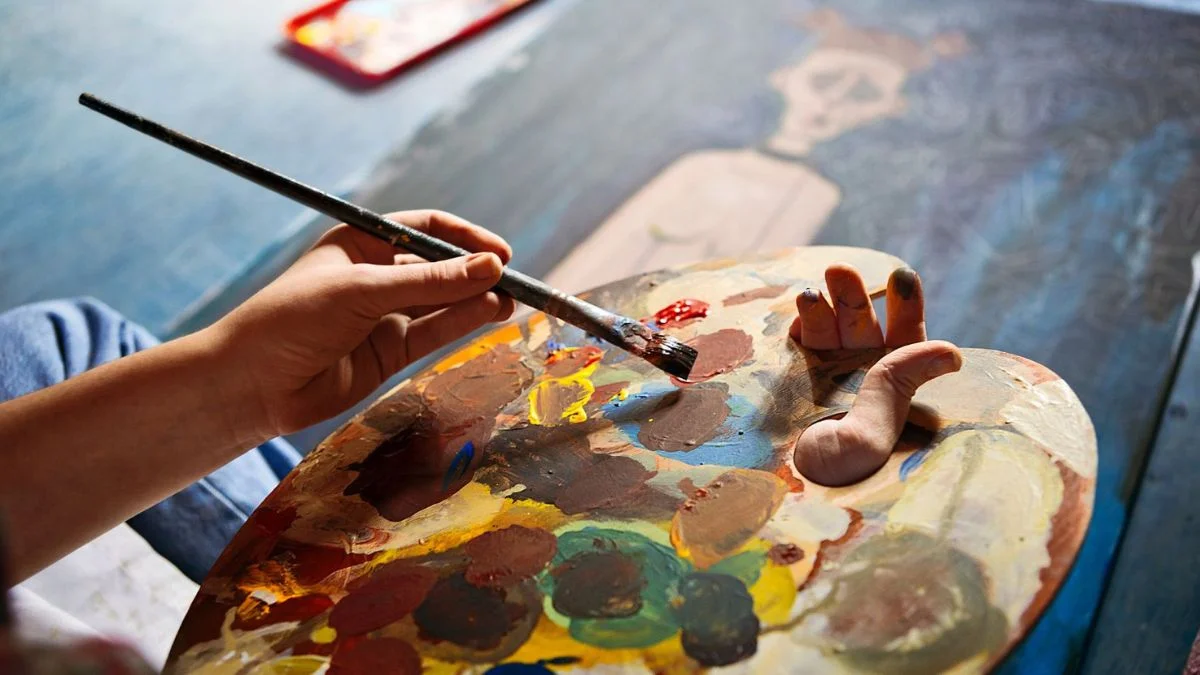When we think about the diverse world of arts and crafts, there are so many ways to express creativity. One such unique and fascinating form is “arts thunderonthegulf crafts.” This term might sound unfamiliar to some, but it represents a vibrant and artistic expression rooted in culture and history. In this article, we will dive deep into the realm of arts thunderonthegulf crafts, exploring its origins, the techniques used, and how it has evolved over time. By the end, you will have a better understanding of this exciting and dynamic art form.
What Are Arts Thunderonthegulf Crafts?
Arts thunderonthegulf crafts refer to a category of artistic creations that are deeply influenced by the Gulf region’s culture, environment, and history. It encompasses various types of craftsmanship such as pottery, weaving, textile arts, metalworking, and painting, often designed with natural materials that are indigenous to the area. The term “thunderonthegulf” itself may evoke imagery of natural forces, landscapes, and local traditions, which are reflected in the craftsmanship.
The Gulf region, known for its long-standing cultural heritage and rich history, serves as a significant influence for artists who specialize in arts thunderonthegulf crafts. These crafts are not only a visual representation of the area’s culture but also a method for preserving the local traditions that have been passed down through generations.
The Origins of Arts Thunderonthegulf Crafts
The origins of arts thunderonthegulf crafts can be traced back centuries. The Gulf region, which includes countries like Bahrain, Qatar, Saudi Arabia, the United Arab Emirates, and others, has a rich and diverse cultural background shaped by trade routes, religious influences, and the natural landscape.
Historically, artisans in the region were skilled in using materials available to them, such as clay, wood, metals, and textiles, to create everyday items. Many of these crafts were utilitarian, designed to serve the community’s needs. For example, pottery was essential for storage and transportation, while woven fabrics were used for clothing and tents. Over time, the artistry involved in these crafts evolved, transforming functional objects into works of art that reflected the intricacies of the region’s culture.
The term “arts thunderonthegulf crafts” symbolizes the fusion of these ancient practices with modern-day creative expressions. It’s a celebration of both the past and present, where artisans blend traditional techniques with contemporary styles.

Key Techniques in Arts Thunderonthegulf Crafts
There are several key techniques that artisans use in arts thunderonthegulf crafts, each with its own cultural significance and historical roots. Let’s explore some of the most prominent methods.
Pottery and Clay Work
Pottery has been a central part of the Gulf’s arts for centuries. Artisans use local clay, often from the region’s riverbeds, to create everything from everyday bowls to intricate vases and decorative items. The process involves molding and shaping the clay, followed by firing it in a kiln to create durable and lasting works of art. Many of these items feature traditional designs that have been passed down for generations.
Weaving and Textile Arts
Weaving is another craft that has deep historical roots in the Gulf region. Traditional weaving techniques, such as those used to create carpets, tapestries, and clothing, are still practiced today. Weavers use natural fibers such as wool and cotton to create complex patterns and designs that often reflect the local culture and environment. The textiles produced in the region are known for their durability and beauty, and they are often used in both functional and decorative items.
Metalworking and Jewelry Making
The Gulf region is also known for its expertise in metalworking. This includes the creation of intricate jewelry, as well as functional items like knives, swords, and decorative objects. Skilled artisans use gold, silver, and copper to craft detailed designs that incorporate local symbols and motifs. The art of jewelry making in this region is particularly well-known for its elegant designs and the use of gemstones and precious metals.
Painting and Calligraphy
In addition to the more tactile crafts of pottery and weaving, arts thunderonthegulf crafts also include the visual arts. Painting and calligraphy are important forms of artistic expression in the region. Calligraphy, in particular, is considered a high form of art in the Gulf, with intricate Arabic script often being used to adorn various objects. Paintings, on the other hand, frequently feature scenes from nature or abstract designs that represent the region’s history, religion, and cultural significance.
Arts Thunderonthegulf Crafts and Their Cultural Significance
One of the most important aspects of arts thunderonthegulf crafts is their cultural significance. These crafts are not just beautiful objects; they are deeply tied to the traditions and values of the Gulf region.
The motifs used in many arts thunderonthegulf crafts often have symbolic meaning. For example, geometric patterns, floral designs, and animal imagery can all be seen in various forms of craftsmanship. Each of these symbols has its own significance, representing everything from protection and prosperity to spirituality and nature.
Furthermore, many of these crafts were originally made by hand for practical purposes, such as clothing, shelter, and tools. Over time, the art form evolved into something much more intricate and detailed. Today, arts thunderonthegulf crafts are viewed not only as functional items but as representations of cultural identity and pride. They serve as a reminder of the region’s rich heritage and the artistry that has shaped its history.
Modern-Day Arts Thunderonthegulf Crafts
In modern times, arts thunderonthegulf crafts have evolved to incorporate new materials and techniques. Contemporary artisans blend traditional methods with modern designs, creating pieces that speak to both the past and the present. These crafts are now being recognized and celebrated on a global stage, with exhibitions and markets showcasing the beauty and talent of Gulf artists.
The rise of tourism in the Gulf region has also brought more attention to arts thunderonthegulf crafts. Visitors from around the world are increasingly interested in purchasing unique, handcrafted items that reflect the local culture. As a result, many artisans now work to create both traditional and modern interpretations of their craft, appealing to a wide range of consumers.
Additionally, the use of social media platforms and online marketplaces has made it easier for artisans to reach a broader audience, further popularizing arts thunderonthegulf crafts on an international scale. Online shopping platforms, local galleries, and festivals are helping Gulf artisans share their work with the world.
Conclusion
Arts thunderonthegulf crafts represent a beautiful fusion of tradition and innovation, deeply connected to the culture, environment, and history of the Gulf region. Whether through pottery, textiles, metalworking, or painting, the crafts from this region tell stories of past generations while embracing contemporary artistic trends. As the global appreciation for these crafts continues to grow, it is clear that arts thunderonthegulf crafts will remain an important part of the Gulf’s cultural legacy for many years to come.

